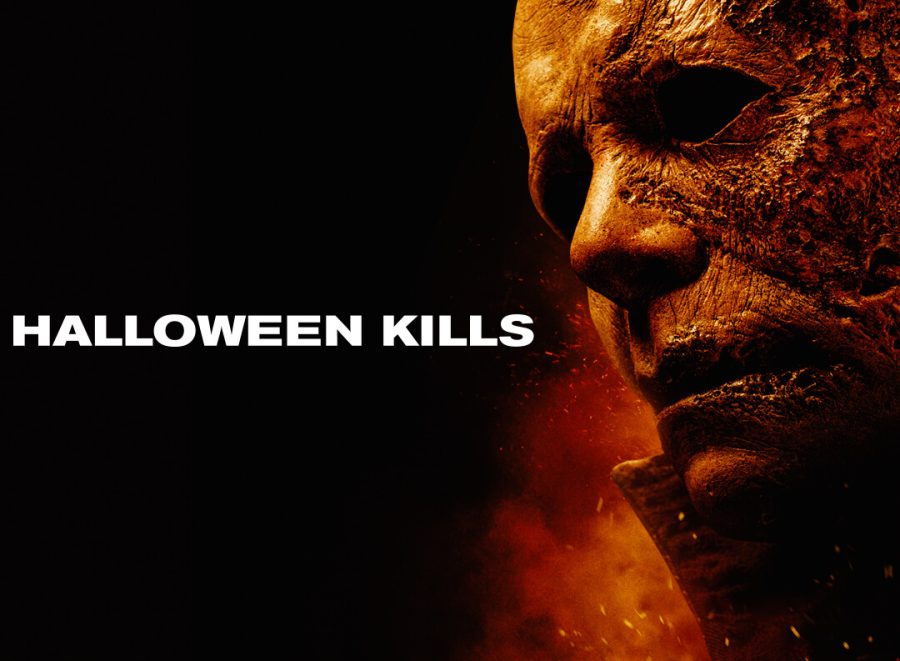REVIEW: “Halloween Kills” all hope for high expectations in this new horror trilogy
With one final installment on the way, “Halloween Kills” proves that three part trilogies aren’t always necessary.
October 30, 2021
Years ago, a six-year-old boy brutally murdered his older sister on Halloween night. More than 40 years later, he was set loose once again in the sleepy town of Haddonfield after escaping from a fiery death trap. With victims succumbing to his evil, it seems that it’s only up to his counterpart Laurie Strode (Jamie Lee Curtis) and her family to put a stop to this boogeyman once and for all.
“Halloween Kills” is a Horror/Thriller film directed by David Gordon Green, who previously directed “Halloween” (2018) and the upcoming final installment, “Halloween Ends” slated to release in 2022.
For a franchise that’s no stranger to multiple timelines, a reboot, a failed anthological sequel, and weird suicidal cults, “Halloween Kills” feels right at home with its previous iterations. However, that isn’t necessarily a good thing.
With “Halloween” (2018) serving as a direct continuation and love letter to fans of the 1978 original film, “Halloween Kills” subsides all of that and fails to progress the story forward. Serving itself as an awkward middle child of the planned three-part trilogy. A movie whose tagline was “Evil Dies Tonight,” a phrase that was repeated over a hundred times in the film, “Evil” was actually postponed until 2022 for its subsequent sequel “Halloween Ends.”
The film brilliantly reintroduces characters from both “Halloween” (1978) and “Halloween” (2018) in a believable fashion to then proceed to shoot itself in the foot by making these returning cast members caricatures of their previous depictions.
Nearly every character in this film, beyond the exception of Jamie Lee Curtis’ character, is needlessly murdered in multiple failed attempts to kill Michael Myers due to atrocious amounts of questionable decision-making.
The latter half of the remaining casts’ deaths felt gratuitous and uncomfortable to watch as the film spends so long needlessly making audience members care about them only to kill them off in horrendous ways due to bad scriptwriting.
The only logical character to be found throughout the entire film is Laurie Strode, a character who is arguably one of the most iconic “final girls” in horror cinema, only to be bedridden throughout the film due to injuries from the previous installment. Though that isn’t to say Curtis didn’t bring her A-Game to the film as a veteran horror actress.
Fans that bought tickets purely for the iconic slasher that is Michael Myers are in for an absolute treat as nearly the entirety of the film is one massive “slaughter-fest,” where it goes above and beyond to make each kill mortifying to watch.
This version of Michael Myers (James Jude Courtney) is perhaps the most brutal depiction of the boogeyman yet. As iconic as it is to watch Myers stalk his prey before attacking them, the film forgoes that completely as it seems that Michael Myers can pop out of nowhere at any given moment, which starts to heavily lean into “Friday the 13th” territory.
The inclusion of multiple 1978 flashback sequences was a delight to watch on screen as these scenes added more insight as to what happened on that fateful night of Halloween. The flashbacks perfectly encapsulated the feeling of the 1978 original film with its 1:1 replications of the Myers house. Also featuring a surprise guest appearance by one of the most beloved characters of the franchise, added more gravitas to the film and as well as being a nod to the fans.
Who would’ve thought that a Captain Kirk mask painted white, a blue jumpsuit and a two-note soundtrack would forever cement the image of the boogeyman for years to come. “Halloween Kills” includes all elements of the original installment but fails to grasp what made it so iconic.
Daniel Pineiro is a staff writer for the University Press. For more information regarding this or other stories, email dpineiro2015@fau.edu or @Danny_x101 on Instagram.






